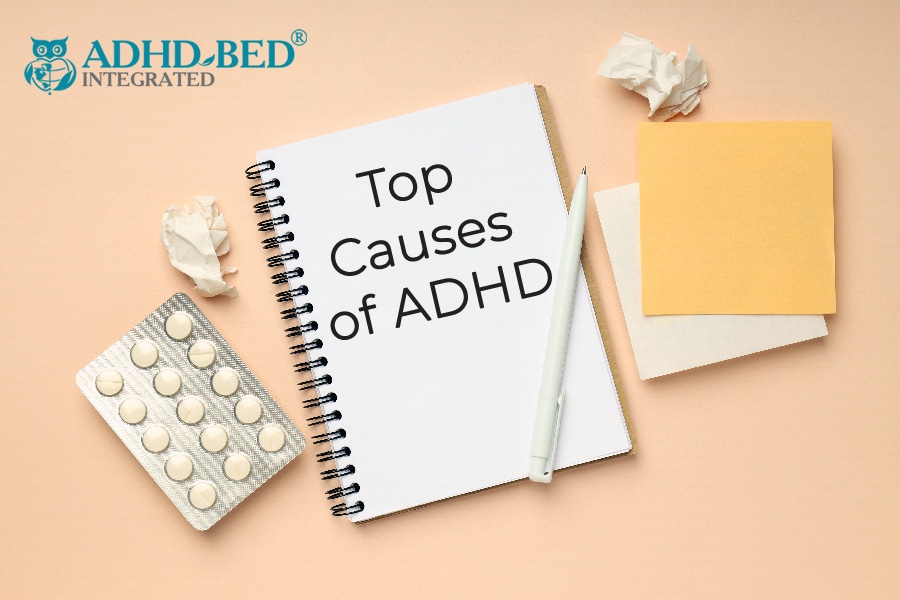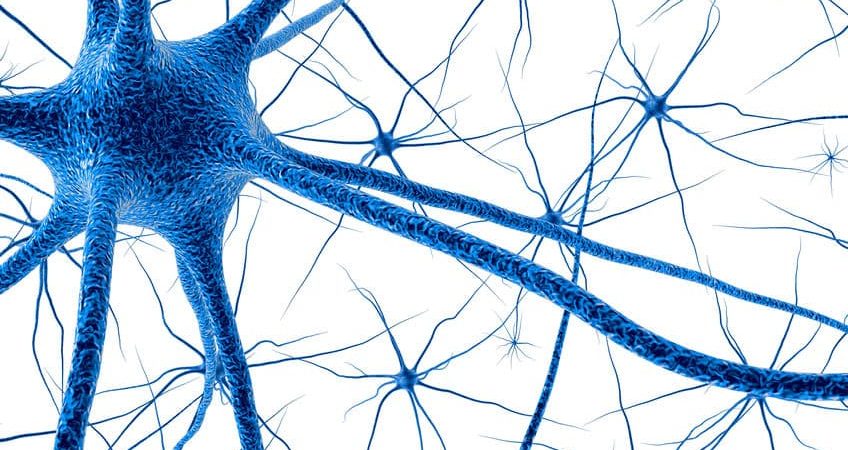Table of Contents
What is ADHD?
ADHD, which stands for Attention Deficit Hyperactive Disorder, is the most common childhood developmental disorder, affecting around 5% of the Australian population. Characterized by inattentive, hyperactive and impulsive behaviour, ADHD can be diagnosed in children as young as 6 years old. ADHD typically begins in childhood and may become a long-term condition persisting into adolescence and adulthood.
People with ADHD can present with different signs and symptoms. Mainly, there are 3 types of ADHD presentations. The inattentive type presents with difficulties in paying attention, but is not hyperactive or impulsive. The hyperactive/Impulsive type presents with hyperactive and impulsive behaviour, but does not struggle with attentiveness. The combined type involves a combination of both inattentive and hyperactive/impulsive presentations of ADHD symptoms.
People with ADHD commonly have trouble with concentrating on a task, inhibiting impulsive and hyperactive behaviour and regulating emotions. Evidently, such difficulties can be disruptive in every day life and negatively affect a person’s relationship with the people around them.
The Signs of Attention Deficit Hyperactivity Disorder (ADHD)
As with the different types of ADHD, the signs and symptoms of ADHD mainly present in two different ways: Inattentive and Hyperactive-impulsive. Here are the classic ADHD signs and symptoms to look out for:
Inattentive Symptoms of ADHD
- Inability to focus or sustaining attention
- Easily distracted by unrelated stimuli
- Difficulty with organising and completing tasks
- Avoidance of tedious tasks that require sustained attentional effort
- Disorganised
- Ofen losing belongings
- Daydreaming
- Forgetfulness
- Poor time management
Hyperactive-Impulsive Symptoms of ADHD
- Inability to sit or stand still
- Often fidgeting or squirming in their seat
- Talking excessively or loudly
- Interrupting others in conversation
- Intruding on others (lack of boundaries)
- Impatience
What Goes On In the Brain?
Impairment of Executive Functioning
The fundamental deficit of ADHD is the impairment of executive functioning. Executive functions are defined by the cognitive processes of the brain that allow for self-regulation and behavioural inhibition, such as working memory and emotional regulation. Essentially, these executive functions are what allows people to control what they say, do and feel in every day life. These deficits in executive functioning result in the signs and symptoms of inattention, hyperactivity and impulsivity that many people with ADHD experience.
But how is ADHD caused in the brain?
ADHD has a strong neurobiological basis, which means that many of the deficits caused by the disorder can be explained by certain complex atypicalities of the structure and function of the ADHD brain.
An important part of the neurobiological mechanisms of the brain, that is largely impacted by ADHD, is the release of certain neurotransmitters in the brain. Neurotransmitters are the chemicals released by neurons of the brain as a means of communicating and transmitting information from one part of the brain to another. These neurotransmitters include dopamine and noradrenaline, which work hand-in-hand to allow for cognitive processes like attentional control and behavioural regulation to occur. Many researchers have found evidence of a significant reduction of dopamine and noradrenaline levels within individuals with ADHD. The lack of dopamine and noradrenaline has been implicated as one of the neurobiological causes linked to the behavioural and cognitive deficits shown in symptoms of ADHD.
Furthermore, the structure of the ADHD brain has been found to be anatomically different to the normal brain. Using brain imaging techniques, research has shown that ADHD is linked to an overall smaller brain size. Further research has found that the areas of the brain that are reduced in sized are the areas responsible for cognitive processes like attention, behaviour regulation and emotional control. This reduction in brain volume and, consequently, brain activity within ADHD patients is attributed as another neurobiological cause of ADHD.
What are the causes of ADHD?
Currently, the exact cause of ADHD is unknown. However, studies have found that not one factor is the sole cause of ADHD. There are multiple risk factors that may increase the chances of a child developing ADHD. These risk factors include genetic factors and environmental factors.
It is also highly likely that the overall risk of a child developing ADHD is dependent on the complex interaction between both genetic and environmental factors, highlighting the idea that not one sole factor can be attributed to causing ADHD.
Common Causes of ADHD in Children
Brain function and structure
As aforementioned, ADHD has a strong neurobiological basis. Studies have shown a reduction in dopamine and noradrenaline levels, as well as smaller brain volumes in children with ADHD. These abnormalities have been linked to being at risk of developing ADHD as they affect the parts of the brain that are responsible for executive functioning.
Genetics and the Family Connection – Is ADHD genetic or hereditary?
ADHD has a high heritability, which means if a parent has been diagnosed with ADHD, it is highly likely that their child would have ADHD as well. Thus, genetics have long been linked to being a risk factor for ADHD. Genetic studies have found that the interaction of more than one gene could be contributing towards the development of ADHD.
Environmental Factors
There are factors within the environment that can increase the risk of developing ADHD. These factors include:
- Consumption of drugs and alcohol during pregnancy
- Premature birth
- Low birthweight
- Exposure to toxic environmental metals (e.g., lead, mercury)
- Nutrient deficiency in diet
- Hostile early childhood experiences like familial conflict or poverty.
MYTHS: What Does Not Cause ADHD
Despite the high prevalence rates, the reality of ADHD is that there are many misconceptions about the disorder. One of common confusions of ADHD revolves around the topic of what actually can lead to the development of ADHD.
Here is a list of the common misconceptions of the causes of ADHD that are myths and are simply NOT true:
- Eating too much sugar
- Food additives
- Allergies
- Immunizations
- Parenting styles
- Playing video games
- Poverty
- Stress
Groups At Risk
With refernece to the risk factors of ADHD, the known groups at risk of developing ADHD include:
- Children who have blood relatives who have been diagnosed with ADHD
- Children who have been born premature
- Children whose mothers smoked cigarettes or drank alcohol during pregnancy
- Children who have been exposed to environmental toxins like toxic metals
- Children who have been nutritionally deprived of sufficient nutrients in their diet
- Children who have had hostile early childhood experiences like familial conflict or poverty
FAQ
Why do so many children have ADHD?
Diagnosis rates of ADHD have drastically increased over the recent decade. One reason that could explain this is the increase in awareness and knowledge surrounding ADHD, particularly with the technological advances in society, as well as advances of findings in research. More people could be becoming more open in seeking a diagnosis and gaining the professional help they need to overcome their ADHD.
What triggers ADHD?
Arguably, there aren’t any particular “triggers” of ADHD, but rather, there are risk factors that may influence the development of ADHD. These risk factors include genetics and environmental influences like the consumption of drugs and alcohol during pregnancy, nutrient deficiency and hostile early childhood experiences like familial conflict or poverty.
At what age do signs of ADHD start?
Signs and symptoms of ADHD can manifest early on in childhood, in children as young as 6 years old.
Does ADHD make you messy?
Yes, it can. Known symptoms of ADHD are disorganisation and forgetfulness, which can manifest in ways like a cluttered living space or having trouble scheduling day-to-day tasks.
Can ADHD develop later in life?
ADHD is classified as a childhood developmental disorder, which means that symptoms of ADHD have to be present during childhood in order to be officially diagnosed with ADHD. While these ADHD symptoms can manifest into adulthood, it is not often that ADHD only develops after the age of 12. However, in recent years, researchers have been exploring the possibility of ADHD developing past childhood, although there is still insufficient evidence to support this theory.
References
- Mehta, T. R., Monegro, A., Nene, Y., Fayyaz, M., & Bollu, P. C. (2019). Neurobiology of ADHD: A Review. Current Developmental Disorders Reports, 6(4), 235–240. doi:10.1007/s40474-019-00182-w
- Buitelaar, J. K., Meer, D.V., & Richards, J. (2019). Understanding the essentials of the ADHD neurobiology. ADHD, 17, 17–41.
- Núñez-Jaramillo, L., Herrera-Solís, A., & Herrera-Morales, W. V. (2021). ADHD: Reviewing the Causes and Evaluating Solutions. Journal of Personalized Medicine, 11(3), 166. doi:10.3390/jpm11030166
- Thapar, A., Cooper, M., Eyre, O., & Langley, K. (2012). Practitioner Review: What have we learnt about the causes of ADHD? Journal of Child Psychology and Psychiatry, 54(1), 3–16. doi:10.1111/j.1469-7610.2012.02611.x



